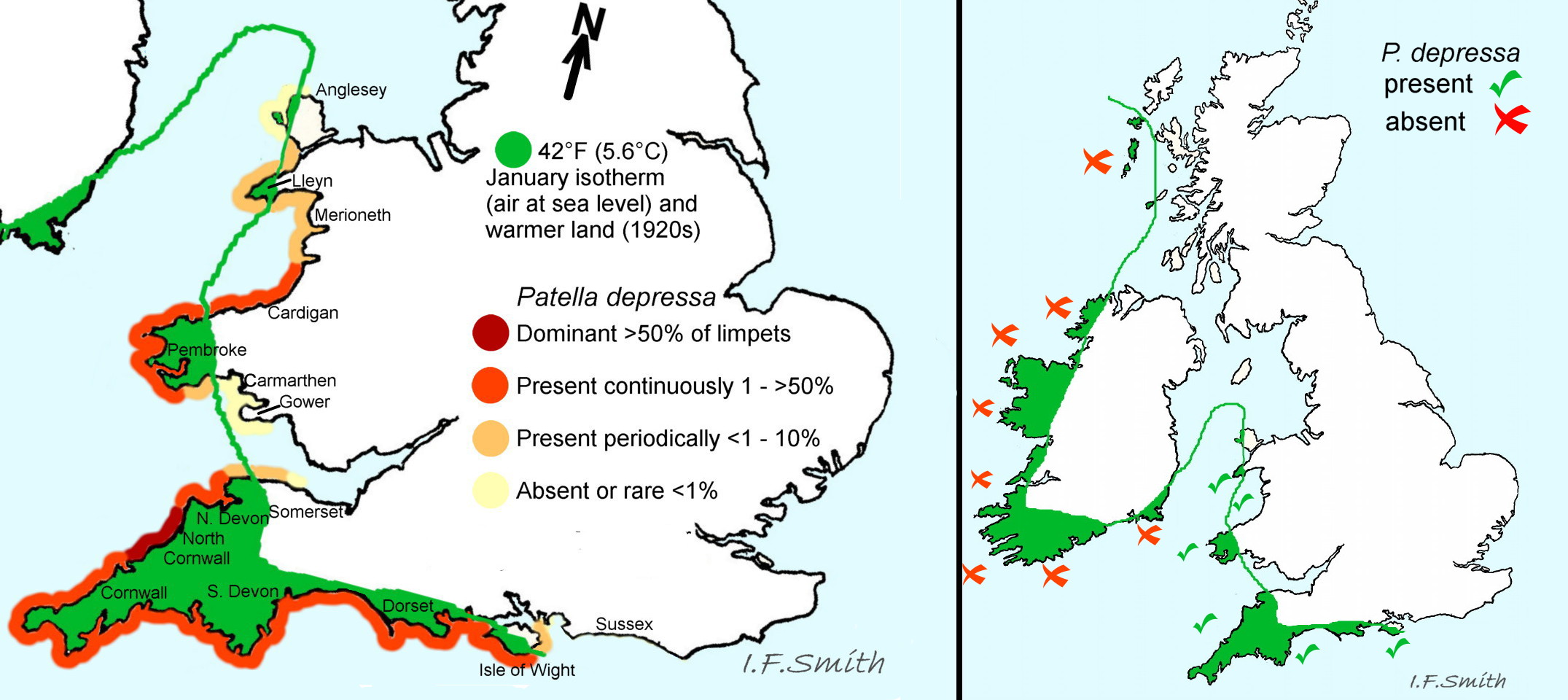Left: map based on data from relatively warmer 1950s and cooler early 1980s in Kedall et al. (2004). Right: mild winter areas probably suited to survival of P. depressa. Isotherm has probably moved north and east since 1920s but configuration remains similar for Air Temperature isotherms and Sea Surface Temperature (SST) isotherms. Mean February SST 1961-1990 in Mieszkowska (2005, ) was over 8°C in areas of stable populations and 7.8 to 8°C in fluctuating areas.
P. depressa is a North-east Atlantic species extending northwards from Senegal (Trigo et al., 2018) through western Iberia and France to its northern limits in North Wales, eastern part of south coast England and Normandy. It extends only a short way into the Mediterranean (Trigo et al., states to Malaga, but there is an image from Almeira of one with diagnostic foot and pallial tentacles on iNaturalist). The precise limits fluctuate, generally polewards in warm periods and receding in cooler periods, though other factors may have an influence. In Britain, it is restricted to areas with mild winters. Consistently present populations occur between the Isle of Wight and mid Wales with zones of fluctuation beyond those points (Kendall et al. 2004). The most recent published information (Oróstica et al., October 2020 ) shows that, as would be expected in this period of exceptional temperature increase, the range has extended with scattered rare specimens reaching Beachy Head in south-east England, near Dunster in Somerset and Barry in Glamorgan but, unexpectedly, it has not reoccupied the north-western side of Lleyn or north-west Anglesey where it was recorded in the 1950s and lost in the 1980s.
The absence of P. depressa records on the mild-winter coasts of Ireland obviously requires explanation. Its distribution is used in Lewis (1964) as an exemplar of “southern species” with an explanation for its absence from Ireland. This eulittoral species cannot crawl across wide sublittoral areas. It is possible that it reached Britain in the warming after the Ice Age before sea-level rise cut Britain off from the continent but after Ireland had been cut off from Britain. Planktonic larvae can traverse sublittoral areas, but the phase is short in P. depressa so time is limited and it is difficult if currents are adverse. External fertilization requires a minimum population density with the sexes in close proximity for successful establishment of a sustained population; there may have been occasional small settlements in Ireland that have subsequently failed (Lewis, 1964). Records in Ireland, Scotland and the North Sea on distribution maps should be regarded as misidentifications unless there is photographic evidence of both brown-black foot and chalk-white opaque pallial tentacles.
OTHER SPECIES ALBUMS
marinvert.senckenberg.science/image-browse/

